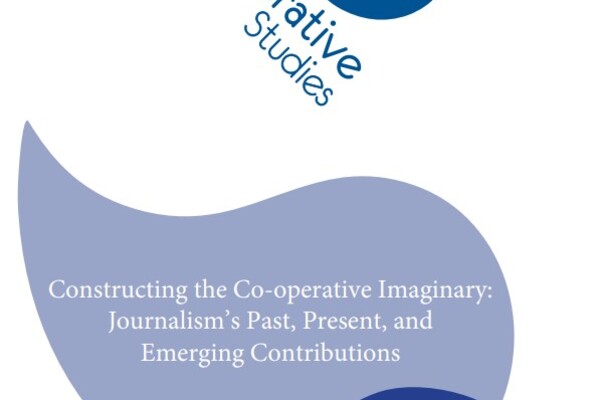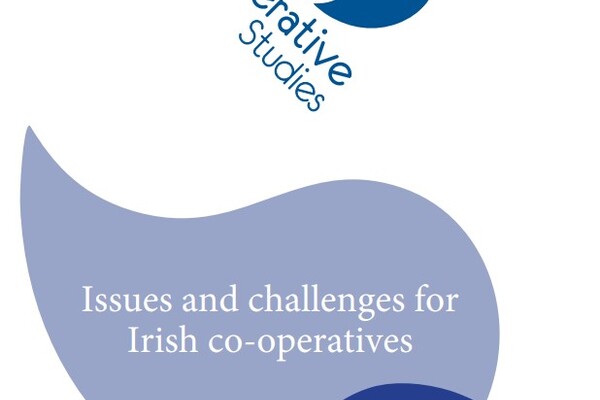Journal of Co-operative Studies, 54(4) - No. 163(S)

To mark the 150th anniversary of Co-op News, this special issue focuses specifically on co-operative journalism and co-operatives in the media. It celebrates co-operative journalism's contribution to the co-operative movement, points to the general invisibility of co-operatives in mainstream media, and considers media co-operatives as an avenue to respond to and recover an ailing news sector. As such we include this special issue (a supplement to No. 163) as an addition to our usual three journal output per year.
Guest Editorial - Constructing the co-operative imaginary: Journalism’s past, present, and emerging contributions
Mitch Diamantopoulos, Alex Bird, and Andrew Bibby, with Siôn Whellens and Rebecca Harvey, pp. 3-6.
Movement journalism and early co-operation: Entwined histories
Mitch Diamantopoulos, pp. 7-19.
![]() Speaking for co-operation: The rise of the co-operative press
Speaking for co-operation: The rise of the co-operative press
Anthony Webster, pp. 20-27.
Christopher A. Olewicz, pp. 28-38.
Establishment media coverage: A story of neglect and bias
![]() Hidden in plain sight: How UK national newspapers report on co-operatives
Hidden in plain sight: How UK national newspapers report on co-operatives
Anita Mangan, pp. 39-50.
Anu Puusa and Sanna Saastamoinen, pp. 51-62.
Co-operative news innovations: Comparing contemporary exemplars
Anca Voinea, pp. 63-71.
![]() Co-operative journalism: A Greek case
Co-operative journalism: A Greek case
Michael Fefes, pp. 72-81
![]() Co-operative conversions in the newspaper industry: Navigating between the reefs towards success
Co-operative conversions in the newspaper industry: Navigating between the reefs towards success
Étienne Fouquet, Myriam Michaud, Luc K. Audebrand and Claude-André Guillotte , pp. 82-91.
Guest Editors
Mitch Diamantopoulos is associate professor in the School of Journalism, University of Regina, Saskatchewan, Canada. He is a founder of Planet S and Prairie Dog magazines, published by Hullabaloo Publishing Workers Co-operative Ltd where Mitch worked for 15 years before moving into academia. Alex Bird is a co-operative researcher and activist. He co-founded a printing co-operative in Cardiff specialising in work for labour movement, and voluntary, charitable and campaigning organisations, during which time Alex founded and edited a Trades Union newspaper (Union Eyes), which became the highest circulation left of centre publication in Wales. Andrew Bibby is a professional writer and journalist. As a successful freelance journalist championing the co-operative movement in The Financial Times, The Guardian, and The Observer, Andrew has now left journalism to be able to spend more time on book-writing.
The editors would like to thank Siôn Whellans and Rebecca Harvey for their input into the development of this special issue. Siôn joined Calverts – a worker-owned creative design studio and print shop, in 1985. He also serves as a member of CECOP, the European confederation of industrial and service co-operatives. Rebecca is executive editor of Co-operative News, having joined the News as deputy editor in 2013. She is the fifteenth named executive editor (appointed in 2018) in the organisation’s 150 year history and only the second woman to hold the most senior post.










